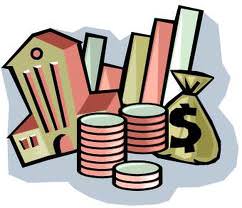If you’re looking for choose a bank, you may be overwhelmed by your options. You have the choice between banks that are completely online and traditional banks, and the terms and conditions each bank offers may vary. Don’t panic if you’re trying to figure out a banking solution. Just compare several options to determine which is right for you.
How to Choose A Bank with the Highest Interest Rate for Savings Account
 You may want to use an online bank instead of a traditional bank. choose a bank often charge less fees and pay higher interest rates than traditional banks. You can get a debit card for an online bank so that you can withdraw money from the ATM, and many online banks offer electronic checking; you tell the bank who to write the check to and it sends it to the recipient within a few days. Many online banks do not charge overdraft fees, although the bank may close your account if you have too many checks returned for insufficient funds. Most online banks also don’t require you to keep a minimum balance in order to avoid monthly fees. Choose a bank with the highest interest rate for savings account.
You may want to use an online bank instead of a traditional bank. choose a bank often charge less fees and pay higher interest rates than traditional banks. You can get a debit card for an online bank so that you can withdraw money from the ATM, and many online banks offer electronic checking; you tell the bank who to write the check to and it sends it to the recipient within a few days. Many online banks do not charge overdraft fees, although the bank may close your account if you have too many checks returned for insufficient funds. Most online banks also don’t require you to keep a minimum balance in order to avoid monthly fees. Choose a bank with the highest interest rate for savings account.
There are some disadvantages to online banking, however. Unlike physical banks, these banks don’t have ATMs of their own set up all over the place, so you have to find an ATM that won’t charge you a fee to use your debit card. In addition, you usually can’t deposit checks in an ATM. In order to deposit money, you may have to send it through the mail to the online bank’s headquarters; however, some online banks allow you to deposit checks by scanning them with a smartphone application.
If you go with a traditional checking account, make sure you find out about monthly fees. Many traditional banks charge a fee if your balance is below a certain amount, such as $100 or $1,000, on the first day of the month. Over the course of the year, these fees can add up to $60 or more.
When evaluating a traditional bank, you should think about whether you can realistically expect to have the balance the bank requires on the first of each month. You should only open a checking account if you are likely to be able to avoid fees.
Although you hopefully are not expecting to have overdrafts, you should find about overdraft fees as well, as these can be steep at some banks. Learn what your overdraft protection options are so that you can avoid fees in the event that you make an error and spend money that you don’t have in your account.
Be careful of ATM fees as well. Many banks charge you a fee for using an ATM not associated with that bank, and the ATM owner may charge you a fee as well. Find out where the bank’s ATMs are and whether it will be convenient to use them as well as getting some information about fees for using ATMs that are not in the bank’s network. Don’t use a bank that doesn’t have convenient ATM access for you unless the bank also does not charge fees for using another bank’s ATMs.
There’s a lot to consider before opening a bank account, but it’s not necessary to get overwhelmed. Just gather some basic information so that you can choose a bank account that will allow you to save money instead of spending extra on unnecessary fees.
